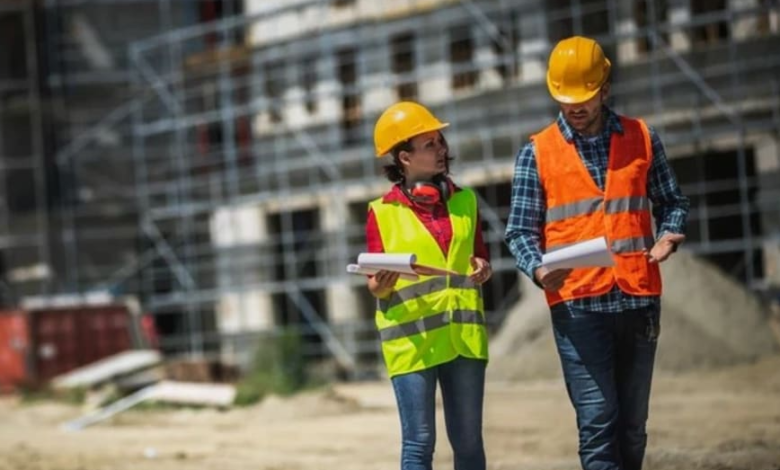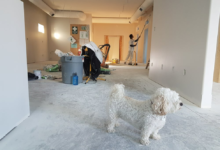Why Melbourne Needs a New Breed of Occupational Hygienist: From Risk Spotters to Strategic Workplace Advisors

Melbourne’s economy is shifting focus from advanced manufacturing and biomedical innovation to infrastructure megaprojects and expanding logistics. As these sectors shift focus, the people within them will face new challenges. With all the excitement that comes from new innovation, unfortunately, too many strategic meetings, hiring conversations, and workforce planning sessions still lack one voice: the occupational hygienist.
Melbourne often views the occupational hygienist’s role as “dust sampling” or “compliance testing.” The truth is, in order to foster workforce wellbeing, organisational resilience, and even ESG credibility, modern hygienists play an essential role. The issue at hand? Most companies hire them far too late, just before audits, during the “fixing” phase, or after the wheels have come off.
Especially considering the high-risk environment in Melbourne, occupational hygienists should be re-positioned as proactive, strategic collaborators, not reactive technicians. The time to make a change is now.
From Compliance to Capability: The Strategic Value of Occupational Hygiene
While working in Melbourne, workplace health exposures are changing quickly. Consider the following:
– Diesel particulates in tunnelling and logistics.
– Noise and vibration in rail and fabrication yard projects.
– VOCs and chemical agents in biomedical and clean tech fields.
– Heat stress in automated and refrigerated warehouses.
– Indoor air quality in high-rise corporate office buildings.
Occupational hygienists in Melbourne are trained to measure, assess, and control these health hazards. The gap that many Melbourne businesses are facing is the lack of participation in the early stages of the process. Hygiene advice is often considered an after-incident reaction or a compliance box to tick. Hygiene should be integrated into the planning stage of the project, in procurement, training, and technology to be adopted.
The occupational hygienist that Melbourne businesses require at this time is not someone who is solely “holding a pump.” Instead, the occupational hygienist now is someone who holds vital information that, if acted upon, can transform procurement decisions, cut down on workers’ compensation claims, and mitigate avoidable reputational damages.
Melbourne’s Challenges with Data Missing Purpose
For many occupational hygienists, the issue is not the data; the issue is how it’s actively being interpreted and dealt with. Many companies in Melbourne already have some form of air and noise monitoring, as well as thermal stress analysis. Unfortunately, the data is often relegated to sitting in the dusty corners of reports, far removed from risk registers, neglected in exposure group assessments, and seldom incorporated into training and health surveillance programs.
Occupational hygienists require being present not just during the measurement, but during:
– Assessing risks and planning controls
– Contractor onboarding
– Designing ventilation systems or chemical storages
– Choosing respiratory protection
– Creating wellbeing and psychosocial risk strategies
It’s not about doing more monitoring — it’s about linking monitoring to decisive action.
See also: Hush Money in Business: Risks, Compliance Issues, and Reputation Management
Workplace Health and ESG: the New Credibility Link
As the ESG frameworks in Australia become more stringent, organizations are being prompted to report on more than just emissions and energy consumption or social responsibility, is being put under the magnifying glass. This focuses on how companies safeguard health, control exposure, and mitigate long latency diseases such as silicosis and occupational asthma.
Here’s the issue: a good number of ESG reports in Melbourne discuss sustainability, but there’s no measurable detail about the actual exposure of the workforce, occupational health controls, or any relevant metrics. That’s a gap. A perilous one.
Occupational hygienists are so well placed to close this gap. They produce relevant metrics, trend analysis, and innovative, evidence-based strategies that can strengthen ESG claims, narratives on safety culture, and philantrhopic impacts on society.
The New Model: Embedded, Not Outsourced
Melbourne businesses must abandon the contractor approach where hygienists are only engaged one day a year. We are catching glimpse of a new phenomenon: embedded occupational hygiene capability — internal or recurring partnership roles which assist with:
Real-time exposure monitoring
Fit-for-purpose PPE and respiratory protection programs
Regular training on hazard awareness
Integration of relevant data into WHS systems and risk dashboards
Strategic involvement in the procurement, sustainability and health governance.
This does not just improve health outcomes — it enhances trust with workers, unions, and investors, as well as regulatory bodies.
Rethinking ROI: Hygiene as Risk Avoidance and Opportunity Capture
Occupational hygiene, as a specific field, is too often treated as a cost line item, but in reality, it spares businesses from:
Costly litigation and compensation claims.
Reputational harm from preventable illness.
Productivity losses from poor working environments.
Insurance issues and regulatory violations.
In Melbourne’s fiercely competitive market, where infrastructure projects undergo public scrutiny and health data circulates rapidly, the roi on prevention is total cost avoidance. The occupational hygienist provides that roi.
Conclusion: Melbourne’s Workforce Deserves More Than Monitoring — It Deserves Insight
Melbourne’s workplaces are sophisticated: automated, data-rich, and dynamic. The same sophistication must be applied to occupational hygiene, which does not call for the clipboard-wielding inspector of yesteryears, but the data-driven, tech-savvy, people-oriented consultant who understands risk as it intersects with operations, reputation, and performance.
Occupational hygienists in Melbourne need the lead, not just to monitor, and be acknowledged as essential enablers of healthy work environments and the future of work.






